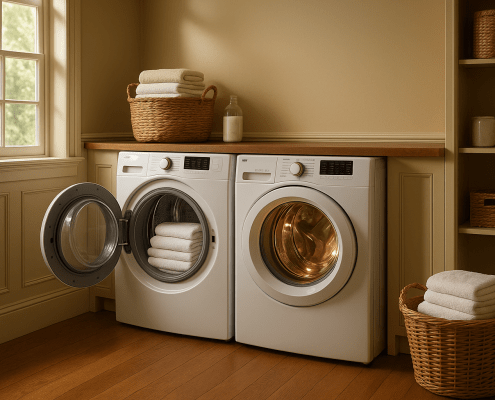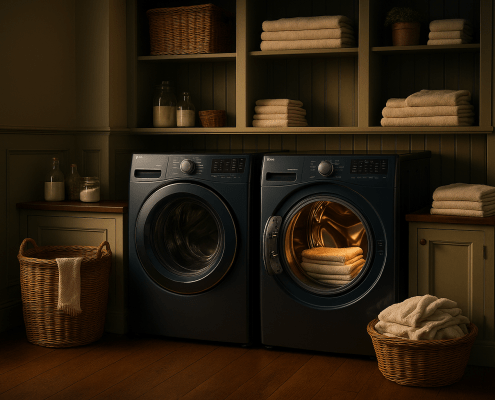How to replace Whirlpool dryer gas valve assembly 280119
Steven E / Thursday February 8, 2024
Is your gas Whirlpool dryer failing to heat up like it used to? A faulty gas valve assembly could be the culprit, leaving your clothes damp and your spirits low. Fear not, with our step-by-step guide and comprehensive how-to video below, you’ll have your dryer back in top shape in under an hour!
If your gas Whirlpool dryer isn’t heating correctly, you might have a faulty gas valve assembly. This part controls the gas supply to the burner by activating the igniter and opening and closing the gas flow as needed. Replacing a defective gas valve assembly is a straightforward repair that you should be able to finish in under an hour.
You can find a replacement gas valve assembly 280119 here. If you need other replacement parts for your Whirlpool dryer, just enter your model number at AppliancePartsPros.com to find them. It’s that easy! Most orders arrive in just two business days, and we have thousands of guides to show you how to install your new parts.
What you need
- Phillips head screwdriver
- 1/4-inch nut driver
- 5/16-inch nut driver
- Small flat-head screwdriver
- Pliers
- Adjustable wrench
- Teflon tape
- Wood block
- Whirlpool gas valve assembly kit 280119 (make sure it’s compatible with your dryer model)
Keep safety first
When working on any appliance, remember to keep safety first. Here are some tips to keep in mind:
- Always power off and unplug your dryer or switch off the circuit breaker before you attempt any maintenance or replacement work. This keeps you safe by preventing any risk of electric shock.
- Shut off the gas supply to prevent any gas leaks while you work.
- If the dryer has recently been used, give it plenty of time to cool down before working on it.
- Take your time while working to prevent accidents and personal injuries. Rushing is the enemy of precision.
- Work in a well-lit area so you can clearly see and access dryer parts.
- Keep your workspace free of clutter and other obstacles. Keep children and pets away from the work area.
- Never work on internal parts with wet hands. Make sure the work area is completely dry.
- Check the user manual to see if there are specific installation or safety instructions related to your dryer or replacement part.
- Be gentle when handling or removing parts. Excessive force might damage the dryer or cause personal injury.
- Wear insulated work gloves to protect your hands from sharp metal parts and debris.
- When working with wires, avoid touching any exposed wires or terminals. If you need to touch a wire, use a non-conductive tool or wear insulating gloves to prevent electrical shock.
- Don’t test live voltage with a multimeter if you’re unfamiliar with how to prevent short-circuiting.
- Consider wearing safety glasses and/or a dust mask when working with chemicals, dust or a large amount of debris to prevent irritation or injury.
- Turn off the water supply at the outlet before beginning repairs. Keep towels ready to catch any residual water in the system when removing parts.
Replacement instructions
Step 1 – Disassemble the dryer
- Make sure the dryer is off and unplugged.
- Turn off the gas supply and remove the gas supply hose.
- Use a 1/4-inch nut driver to unscrew the two back panel screws.
- Slide the top panel back and lift it off.
- Remove the control panel screws and detach the wire connections. Slide out the panel.
- Open the dryer door and take out the lint screen.
- Remove the Phillips screws along the inside of the front panel.
- Close the door, tilt the dryer back, and place a wood block under the front legs for support.
- Use a 1/4-inch nut driver to remove the front panel screws and detach the wire plug. Lift off the panel.
- Take off the blower housing bracket screws and spring clip.
- Remove the top brace screws and detach the front bulkhead.
- Disconnect the belt from the pulleys and slide out the drum.
Step 2 – Remove the old gas valve
- Use a small flathead screwdriver to detach the coil and igniter wire plugs from the valve.
- Unscrew the gas pipe at the back with a 1/4-inch nut driver.
- Use the 1/4-inch nut driver to remove the bracket screws holding the assembly.
- Carefully maneuver the assembly out. Turn it to move the bottom bracket around the green wire.
- Take the mounting bracket off the old valve.
- Discard the defective gas valve.
Step 3 – Install the new valve
- Carefully position the igniter on the new valve. Secure it with the provided screw and 5/16-inch nut driver.
- Slide the mounting bracket onto the new valve assembly.
- Feed the gas pipe through the back opening.
- Position the assembly and engage the bracket tab in the slot.
- Use a 1/4-inch nut driver to replace the bracket screws.
- Reconnect the coil and igniter plugs.
- Tighten the gas pipe screw at the back with a 1/4-inch nut driver.
Step 4 – Reassemble the dryer
- Slide the drum back into place and loop the belt around the pulleys.
- Reattach the front bulkhead and the top brace bracket.
- Attach the front panel with the Phillips and 1/4-inch screws.
- Secure the control panel and top cabinet panels with a 1/4-inch nut driver.
Finishing touches
- Wrap Teflon tape clockwise around the gas line and adapter threads.
- Hand-tighten the gas line and adapter. Then use pliers and a wrench to tighten them.
- Turn on the gas supply to the dryer.
- Reconnect the dryer to the power supply.
More information
Thanks for reading! If you have any other appliance repair needs or projects, you can find other resources and our DIY blog at AppliancePartsPros.com. There, you can enter your model number to order the exact parts you need. Most orders arrive in 2-3 business days.
You can also reach our award-winning customer service team at 1-877-477-7278, chat with a pro on our website, and watch thousands of free video tutorials on our YouTube channel. We can also help you troubleshoot common dryer problems here.
With nearly a decade of experience in providing top-notch customer service regarding appliance parts and repair, Steven enjoys sharing practical advice, troubleshooting tips, and interesting information to help readers stay informed.





